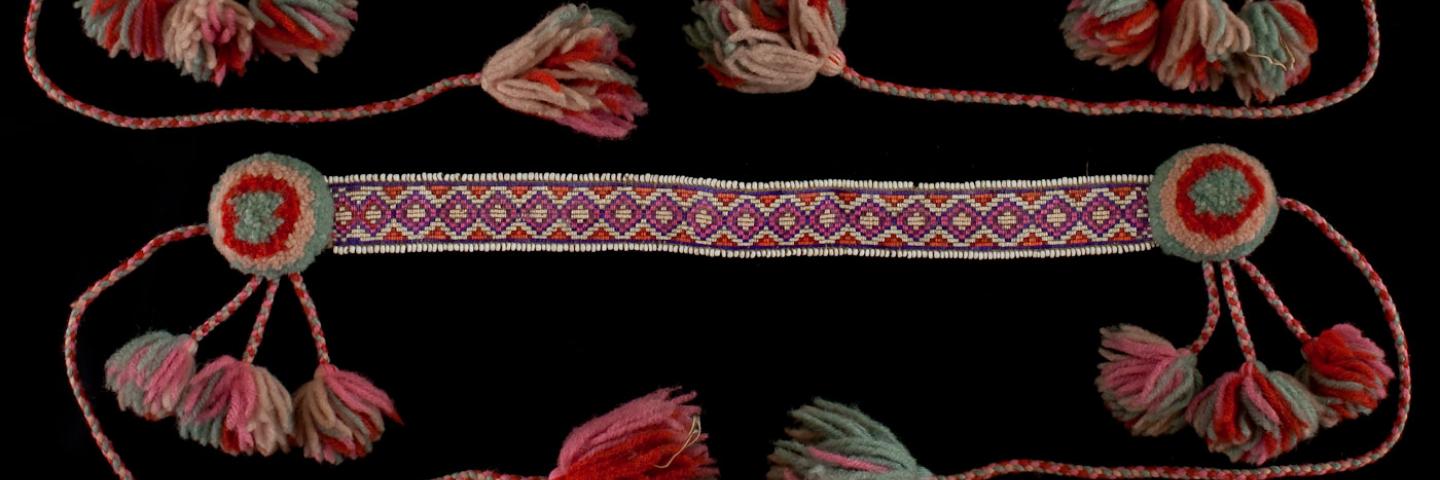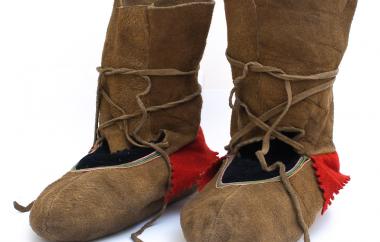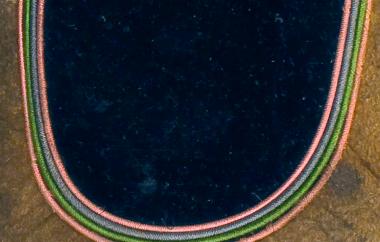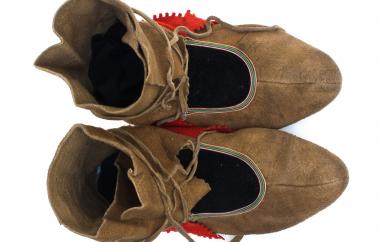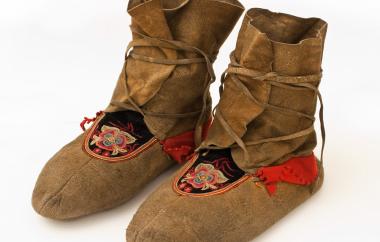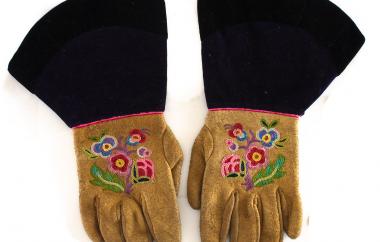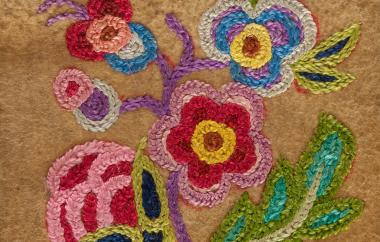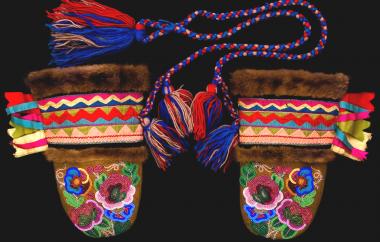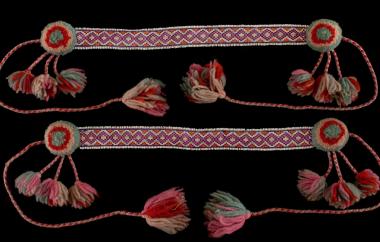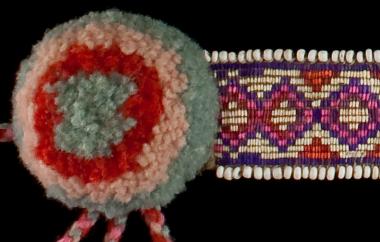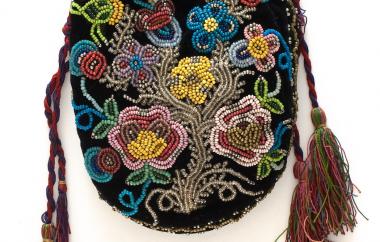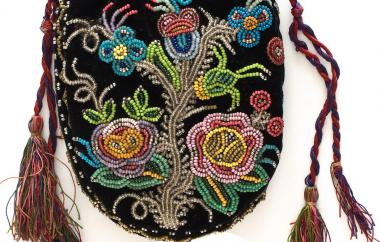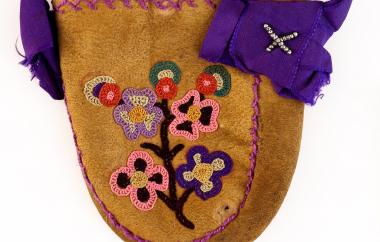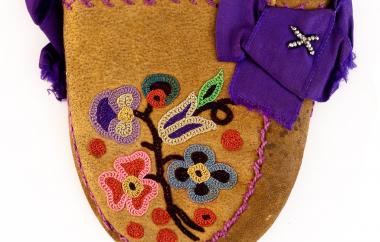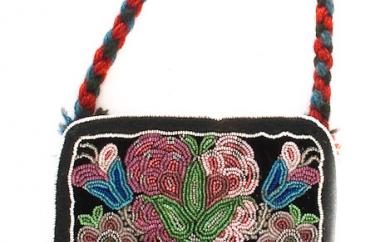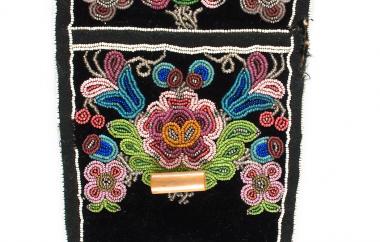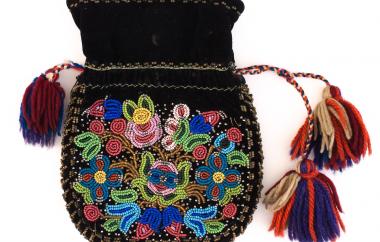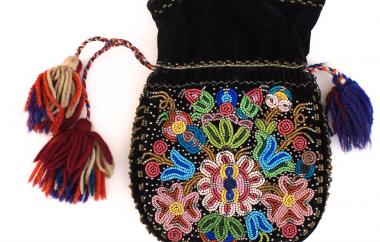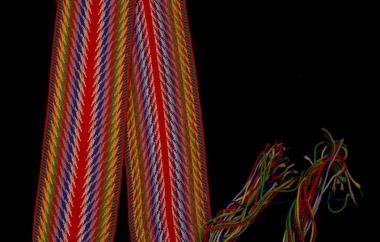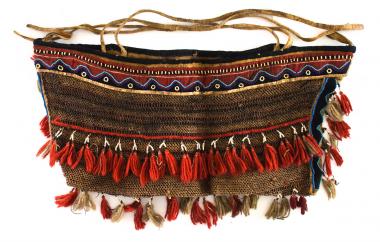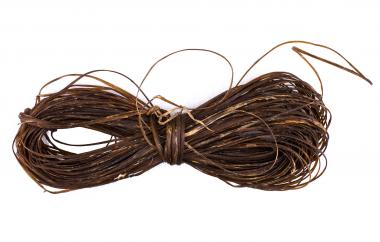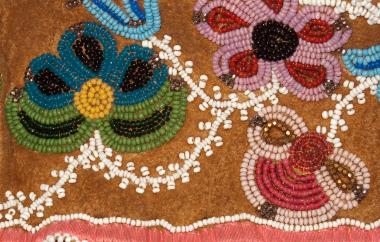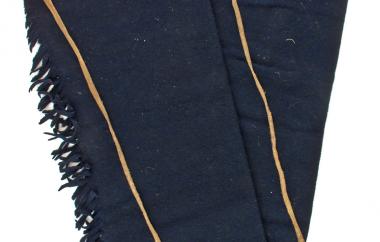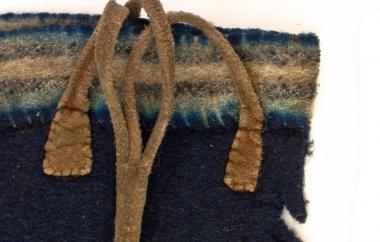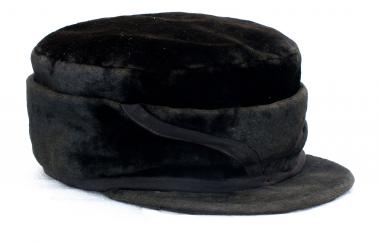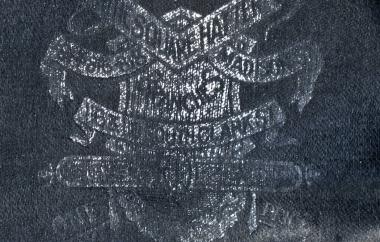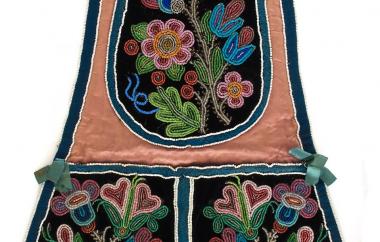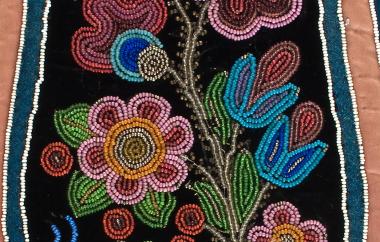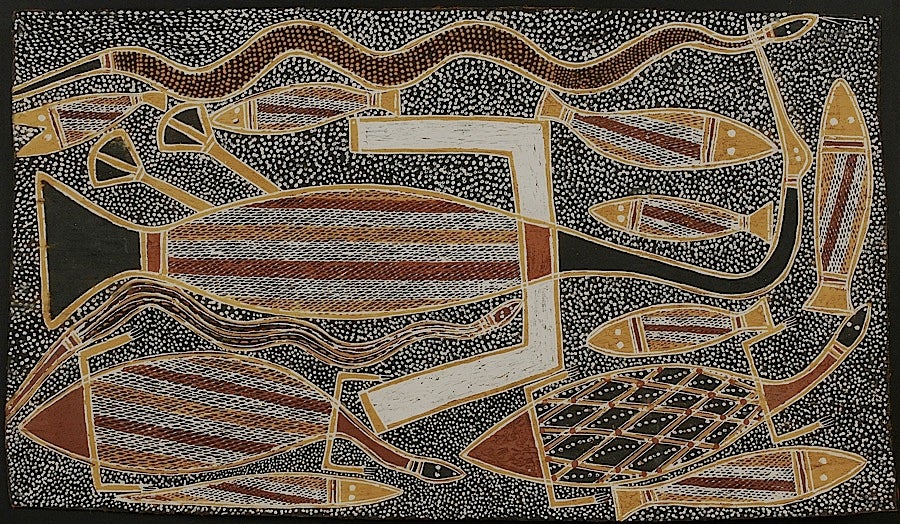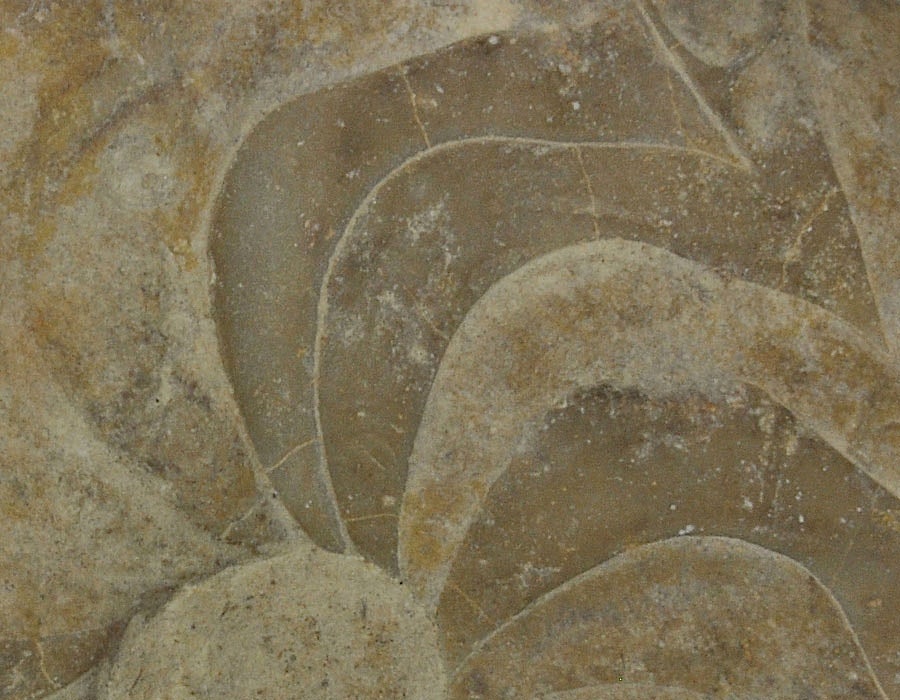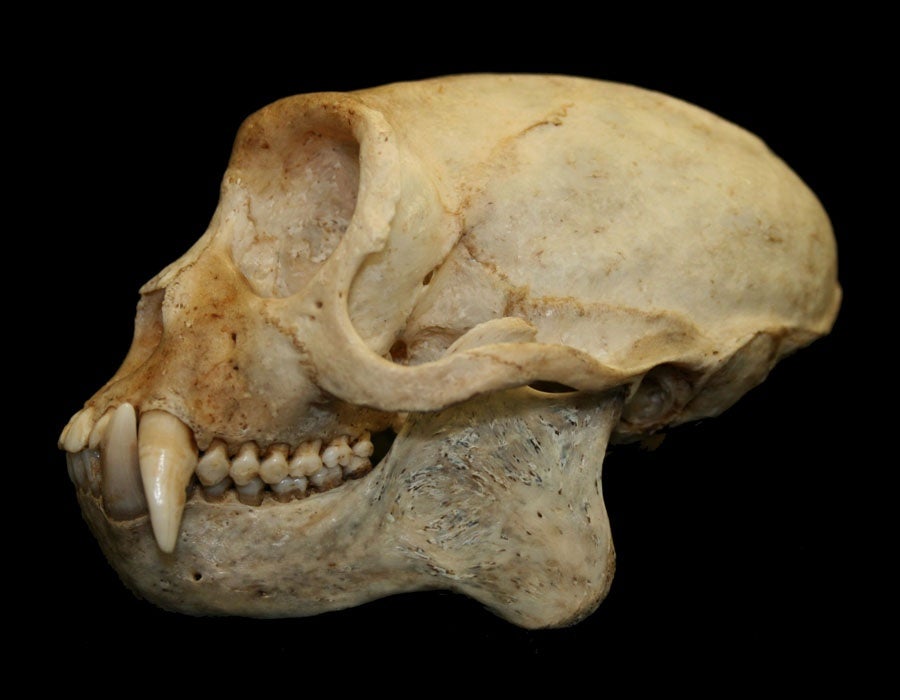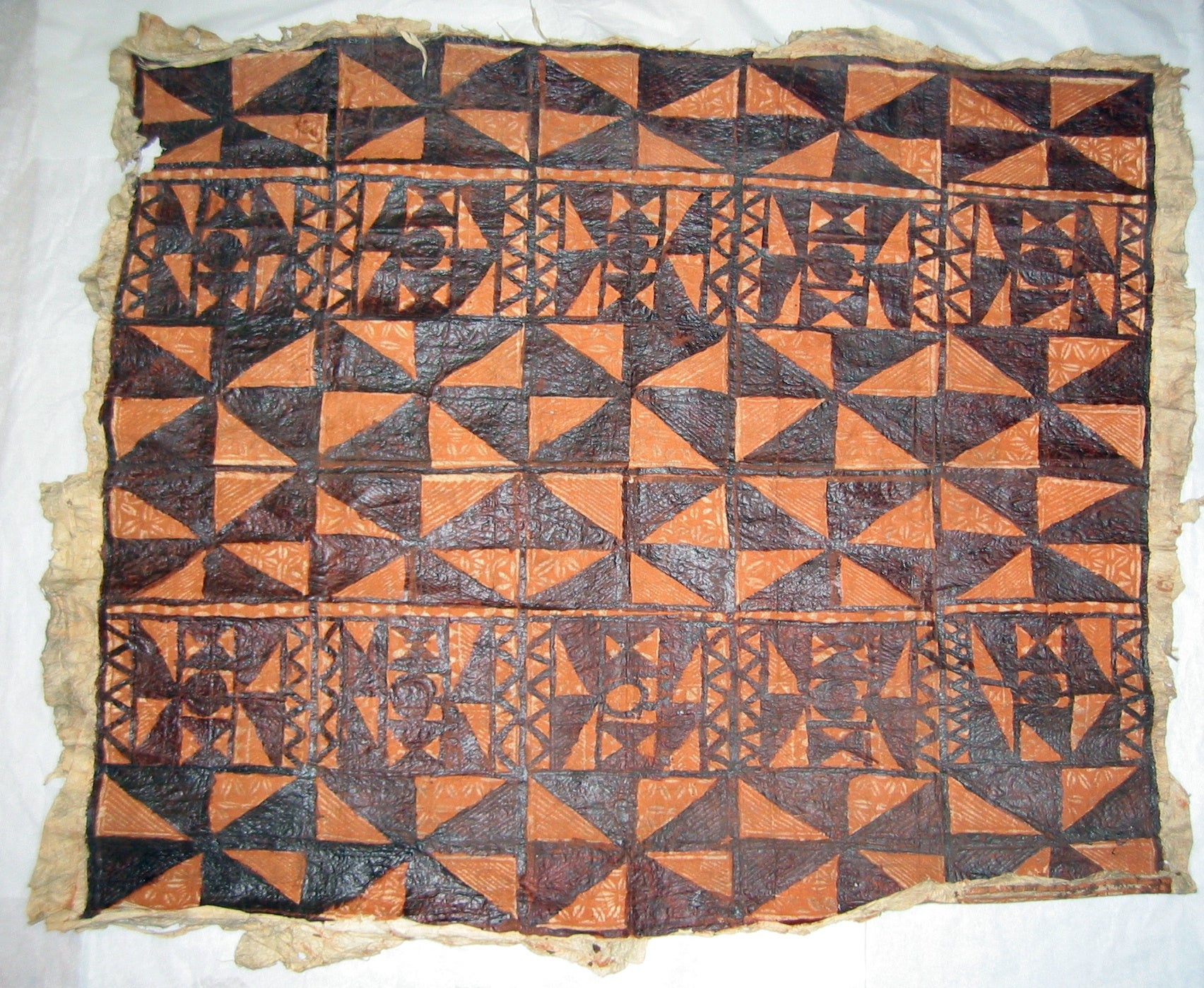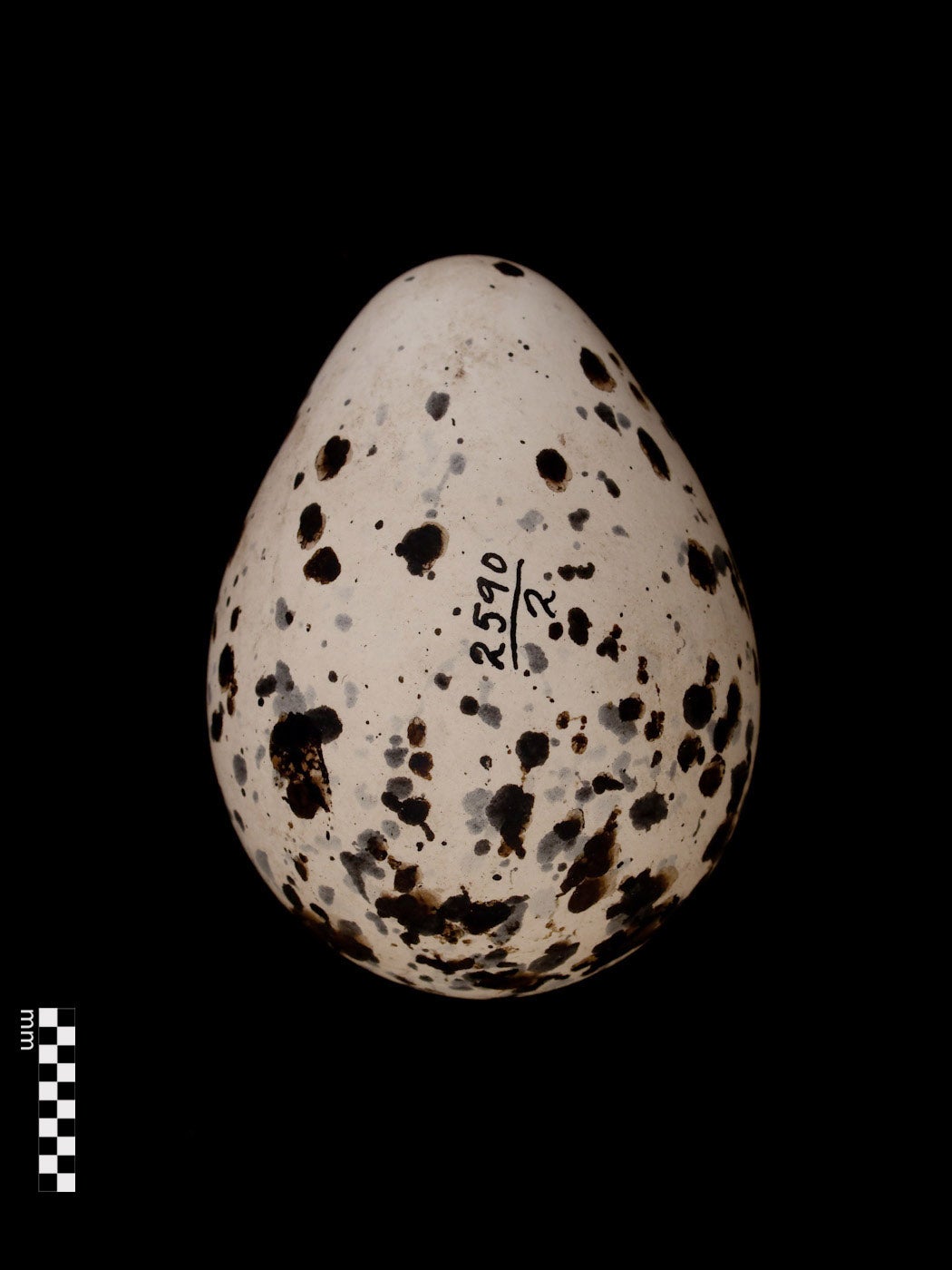French and Scottish fur traders arrived at Hudson’s Bay in the 17th century, trapping across the drainage basin of the bay and beyond. Some settled and married Native women. Their descendants came to be known as the Métis. Drawing from Native and European ancestry, the Métis became intermediaries between traders and Native peoples and created a distinct culture of their own. While the Métis maintained separate communities in the south, in the north they remained primarily a part of the respective Native societies.
Mission schools, founded to teach Christianity to Native peoples and children of Europeans, also taught domestic arts of sewing and embroidery in the European tradition. European-style clothing was encouraged and quickly became part of the Métis wardrobe, however Métis preferred tanned hide to woven cloth, adorning clothing with intricate beadwork and/or embroidery. European embroidery techniques were quickly adapted to work with traditional Native motifs. Métis beadwork was highly prized, and the Métis were, in fact, called the “flower beadwork people.” This was a part of their blended culture.
The black velvet beaded pouches and buckskin jacket show the intricate designs favored by Métis beaders and illustrate their skill and artistry. Floral motifs have an almost three-dimensional quality and often exhibit symmetrical designs of great intricacy. Each bead is sewn in place using a two-thread, couching technique. Women who specialized in beadwork were highly respected and their work was of great value and sought after by the local community and collectors. Most of the glass beads originally come from Bohemia or Italy, where traditional beadmakers specialized in creating specific colors, according to secret recipes. Often recipes were not passed on, and the color was lost forever.
Collected by Samuel Washburn between 1897 and 1905, and donated to the Museum of Natural and Cultural History by his niece Jessie B. Sterne, in 1959, these objects came from the Mackenzie and Hay River region of northwestern Canada, traditional territory of the Athabaskan Dene people.
Images © UO Museum of Natural and Cultural History. Production of this gallery was generously supported by The Ford Family Foundation.
Further Reading:
Dubin, Lois Sherr and Togashi
1987 The History of Beads, from 30,000 B.C. to the Present. New York: H.N. Abrams.
Duncan, Kate C., Terry P. Dickey, and Mary Beth Smetzer
1984 Some Warmer Tone: Alaska Athabaskan Bead Embroidery. Alaska Historical Commission Studies in History, No. 131. Fairbanks: University of Alaska Museum.
Duncan, Kate C. and Eunice Carney
1988 A Special Gift: The Kutchin Beadwork Tradition. Seattle: University of Washington Press.
Crabtree, Caroline and Pam Stallebrass
2002 Beadwork: A World Guide. New York: Rizzoli.
Thompson, Judy
1990 Pride of the Indian Wardrobe: Northern Athapaskan Footwear. Toronto: Bata Shoe Museum.
Cat. #2-7581
Moccasins, 20 x 11 cm
Cat. #2-7581
Moccasins detail, 20x11 cm
Cat. #2-7581
Moccasins, 20 x 11 cm
Cat. #2-7582
Embroidered moccasins, 19 x 11 cm
Cat. #2-7582
Embroidered moccasins detail, 19 x 11 cm
Cat. #2-7585
Embroidered Gauntlets, 33.5 x 20 cm
Cat. #2-7585
Embroidered Gauntlets, detail 33.5 x 20 cm
Cat. #2-7586
Beaded Mittens, 29 x 21.4 cm
Cat. #2-7587
Quillwork Garters for Leggings, 107 x 2.8 cm
Cat. #2-7587
Quillwork Garters for Leggings detail, 107 x 2.8 cm
Cat. #2-7588
Beaded Velvet Drawstring Bag, side one, 15.3 x 10.5 cm
Cat. #2-7588
Beaded Velvet Drawstring Bag, side two, 15.3 x 10.5 cm
Cat. #2-7589
Embroidered Leather Bag, side one, 9.3 x 8.2 cm
Cat. #2-7589
Embroidered Leather Bag, side two, 9.3 x 8.2 cm
Cat. #2-7590
Intricately Beaded Bag, 29.8 x 15.5 cm
Cat. #2-7590
Intricately Beaded Bag detail
Cat. #2-7592
Beaded Velvet Drawstring Bag, side one, 18.5 x 13.5 cm
Cat. #2-7592
Beaded Velvet Drawstring Bag, side two, 18.5 x 13.5 cm
Cat. #2-7594
Hand-Woven Scarf or Belt, 320 x 18 cm
Cat. #2-7595
Babiche (Rawhide Cord) Bag, 40 x 26 cm
Cat. #2-7579
Babiche (Rawhide Cord) Skein. Raw material for Babiche Bag.
Cat. #2-7598
Leather Jacket with Beaded Yoke and Velvet Collar, 81 x 84 cm
Cat. #2-7598
Leather Jacket with Beaded Yoke and Velvet Collar, detail, 81 x 84 cm
Cat. #2-7599
Woolen Leggings with Fringe, 60 x 29 cm
Cat. #2-7599
Woolen Leggings with Fringe, detail, 60 x 29 cm
Cat. #2-7601
Velvet Cap
Stamp identifies source as The Square Hatter, Chicago, Illinois.
11.5 x 26.5 x 19.6 cm
Cat. #2-7601
Velvet Cap detail
Stamp identifies source as The Square Hatter, Chicago, Illinois.
11.5 x 26.5 x 19.6 cm
Cat. #2-15445
Beaded Wall Pocket, 45.7 - 31.5 cm
